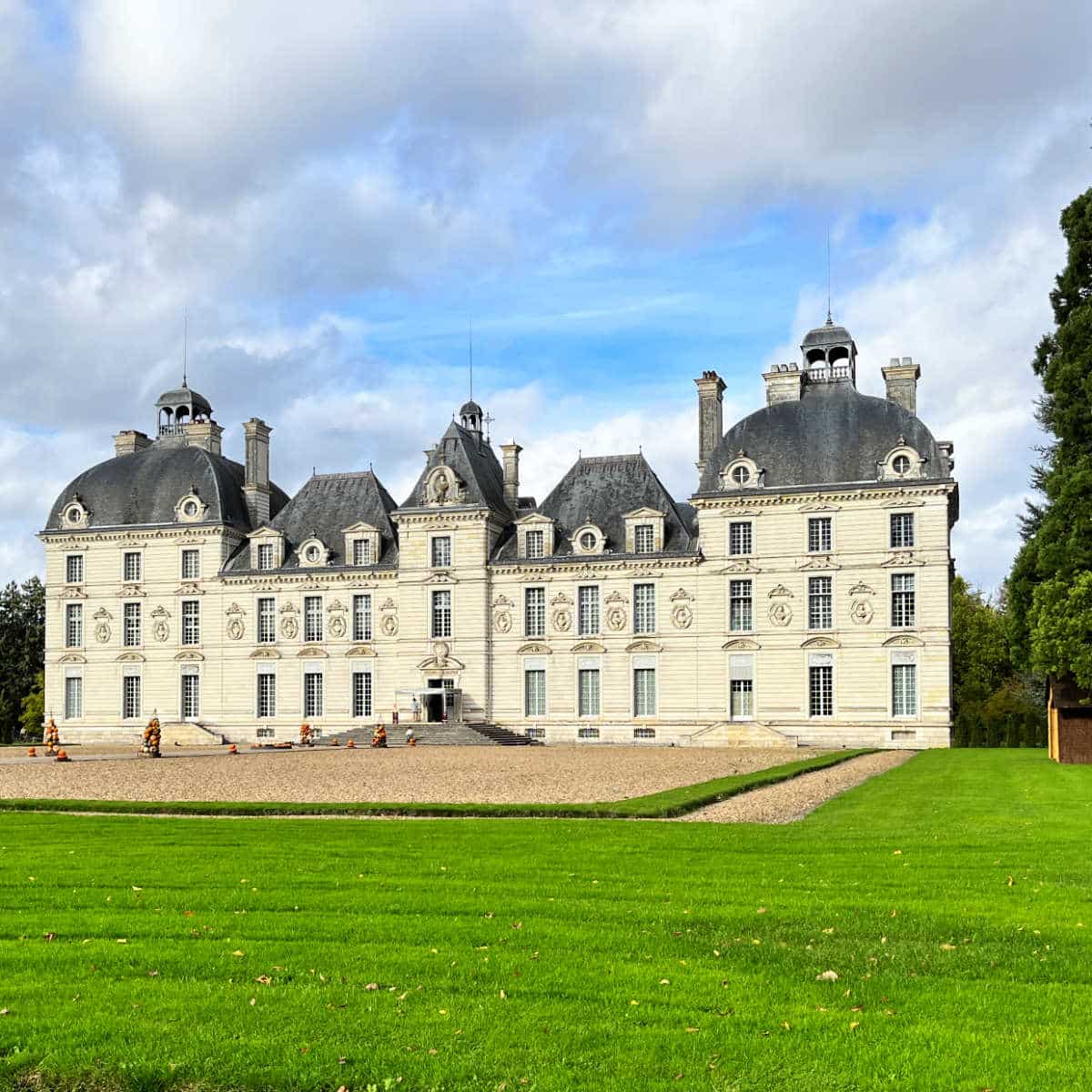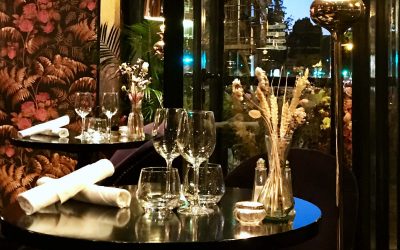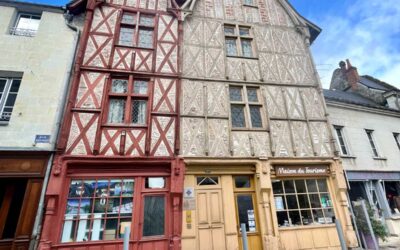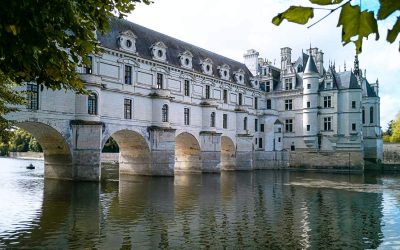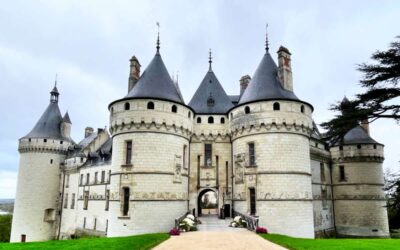The Château de Chéverny is one of those classical French châteaux that one can imagine living in. It is a large elegant château that is still a private residence and as such has been updated with things like plumbing and heating.
Located in the countryside, it is a few miles from the Loire river near other famous châteaux in the area like Château Royal de Blois, Château de Chaumont, Château de Chenonceau, and Château de Chambord, near the city of Amboise and Blois. It is about 3 hours away from Paris, making it ideal for a day trip from the city.
So let’s explore how the Château de Chéverny came to be and what to see inside, shall we? Allons-y!
Why it is famous
The Château de Cheverny is famous for being a luxuriously decorated castle, that was built to entertain. It was never a royal château, but is privately owned.
These days it is a top tourist attraction, renowned across France for magnificent interiors and its collection of furniture, tapestries, and objets d’art.
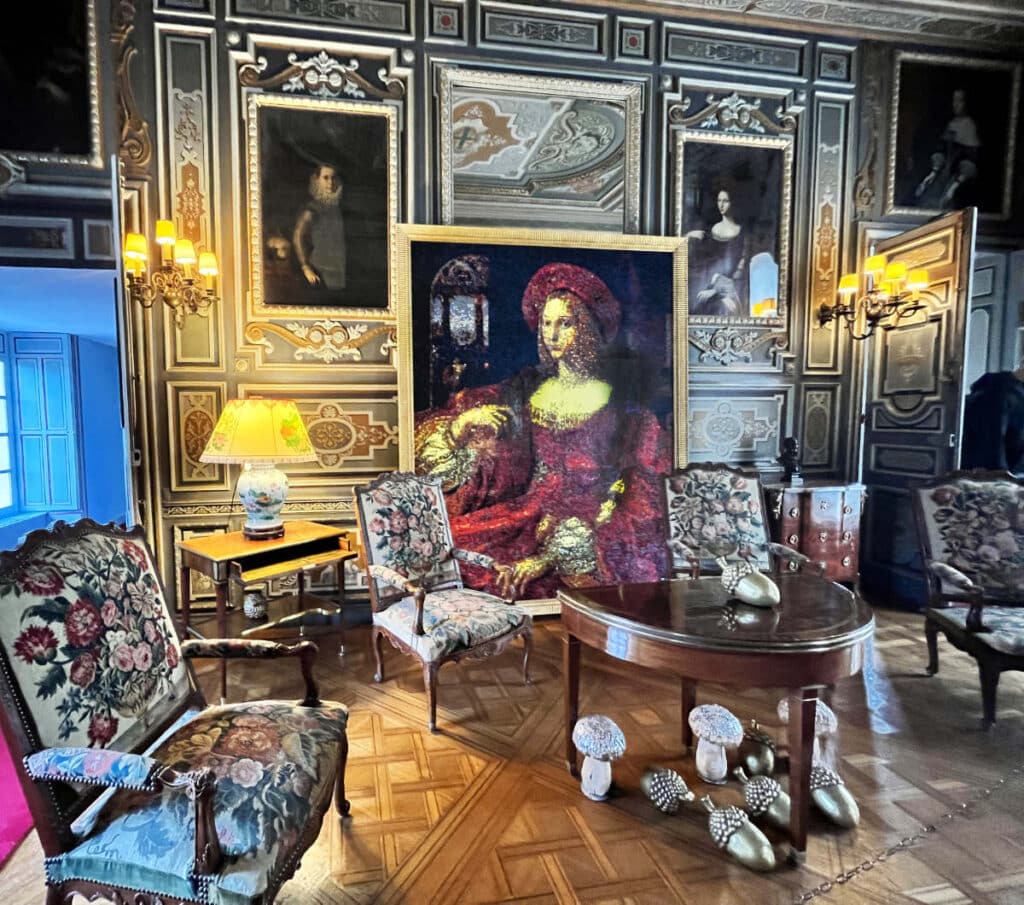
Over the years, it has multiplied the number of attractions inside the château and grounds to attract visitors. With everything from lego and comic book exhibits, it has managed to stand out amongst the numerous beautiful châteaux in the Loire valley (of which there are plenty!).
History
The original castle that existed on the grounds of Chéverny dated back to the 14th century and belonged to the Counts of Blois.
The lands were purchased in 1510 by Henri Hurault, Comte de Cheverny, the military treasurer for King Louis XIII. His descendant, the Marquis de Vibraye, is the present owner, however the family did have some twists and turns in order to get it back.

In 1537, the château was taken from the family due to fraud and bankruptcy, when the widow of the Comte was left alone with 7 children.
The property became part of the Crown, and King Henri II decided to give it to his favorite mistress Diane de Poitiers in 1551. However, she had also received the Château de Chenonceau from King Henri and preferred that one instead, since it was on the Cher river.
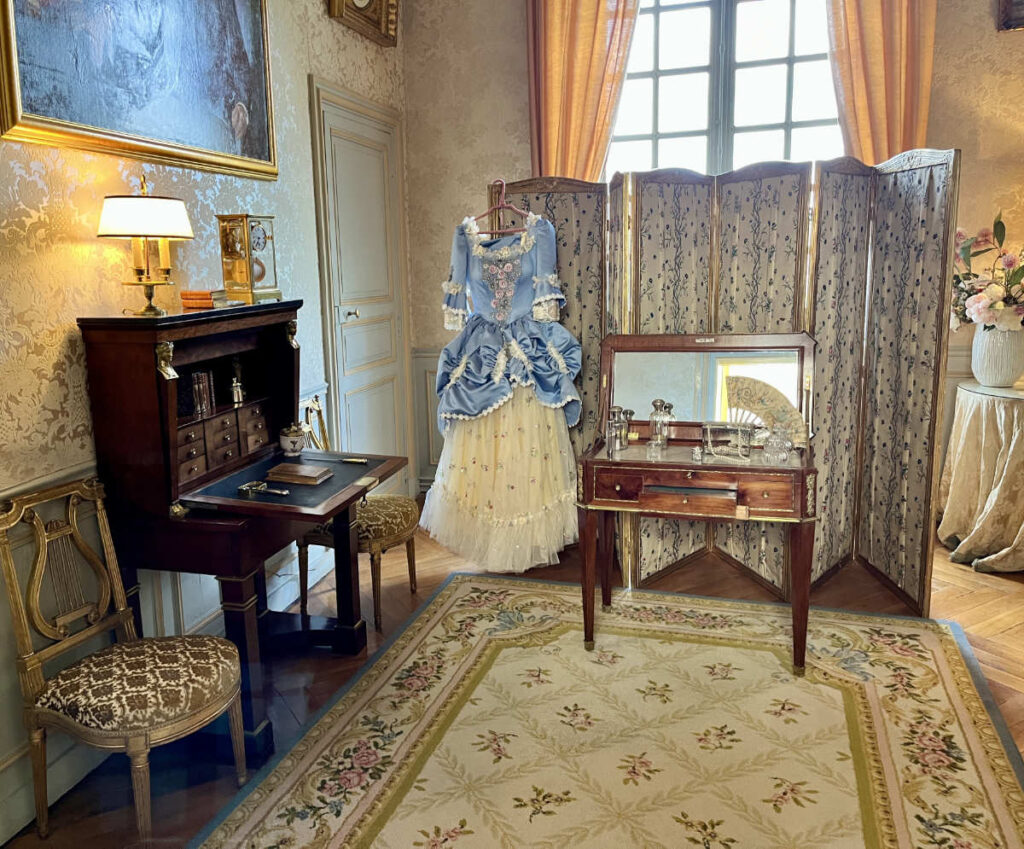
In either case, Diane de Poitiers had to give the property back to the former owner’s son, Philippe Hurault, as the château had been taken from Hurault family when he was still underage.
Philippe’s son Henri would undertake grand revovations, building the château’s new wings and interior between 1624 and 1630. Much of the Renaissance-style that you see at the château today comes from this period.
During the French Revolution, the family was forced to sell the property in 1802, but bought it back again in 1824 during the Bourbon Restoration under Charles X. The Hurault family continues to live at the château, although most days the château today is filled with visitors and tourists.
The Loire Valley châteaux like Chéverny are officially recognized on the UNESCO world heritage list.
Inside the Château
The inside of the Château de Chéverny is a feast for the eyes. The downstairs has several reception rooms and a dining room that is sumptuously decorated from floor to ceiling.
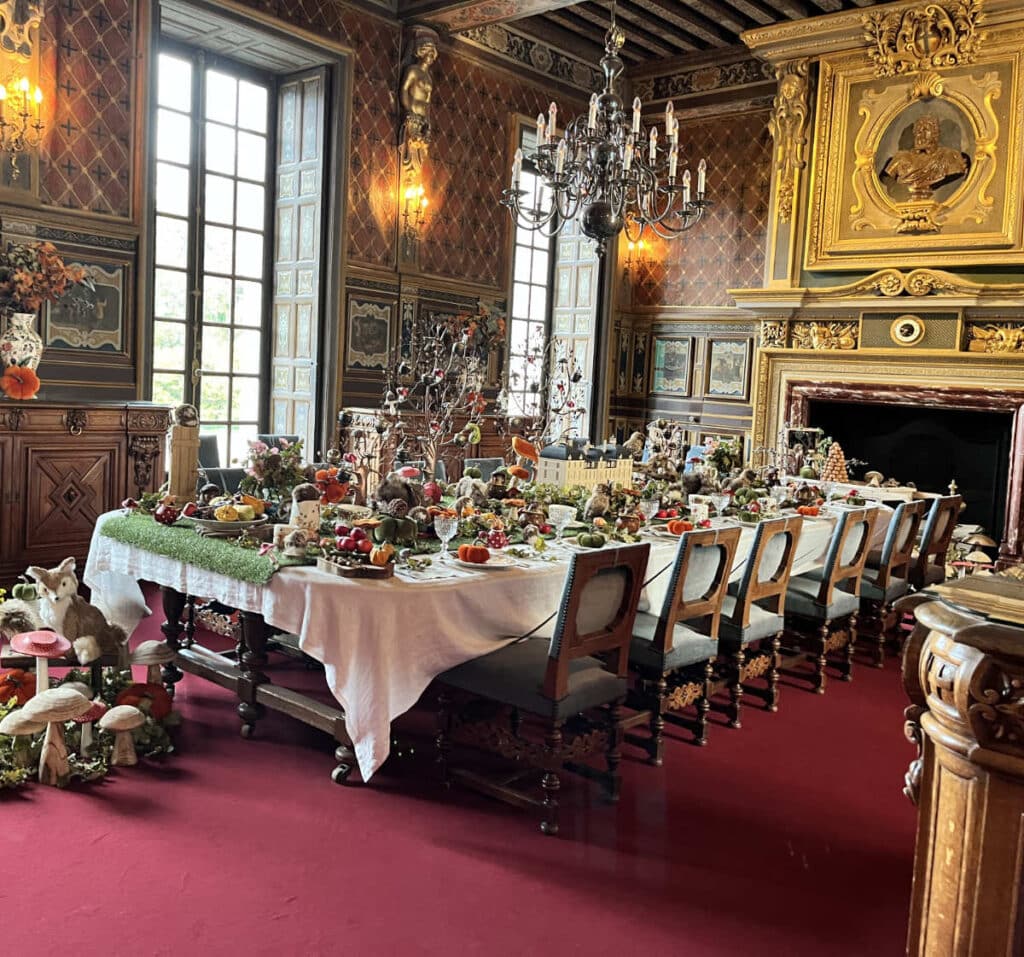
There is also a large salon that has various pieces of armor and weapons dating back to the Middle ages and the Renaissance periods. If you are a fan of lego, you will also see a couple of life-size displays of lego reproducing famous paintings.
Upstairs, there are several bedrooms that are set up to display “château life” for nobility as it would have been in the 19th century. Along with a couple of children’s bedrooms, there is even a room set up as a bridal suite, complete with bridal gown and flowers ready for the bride.
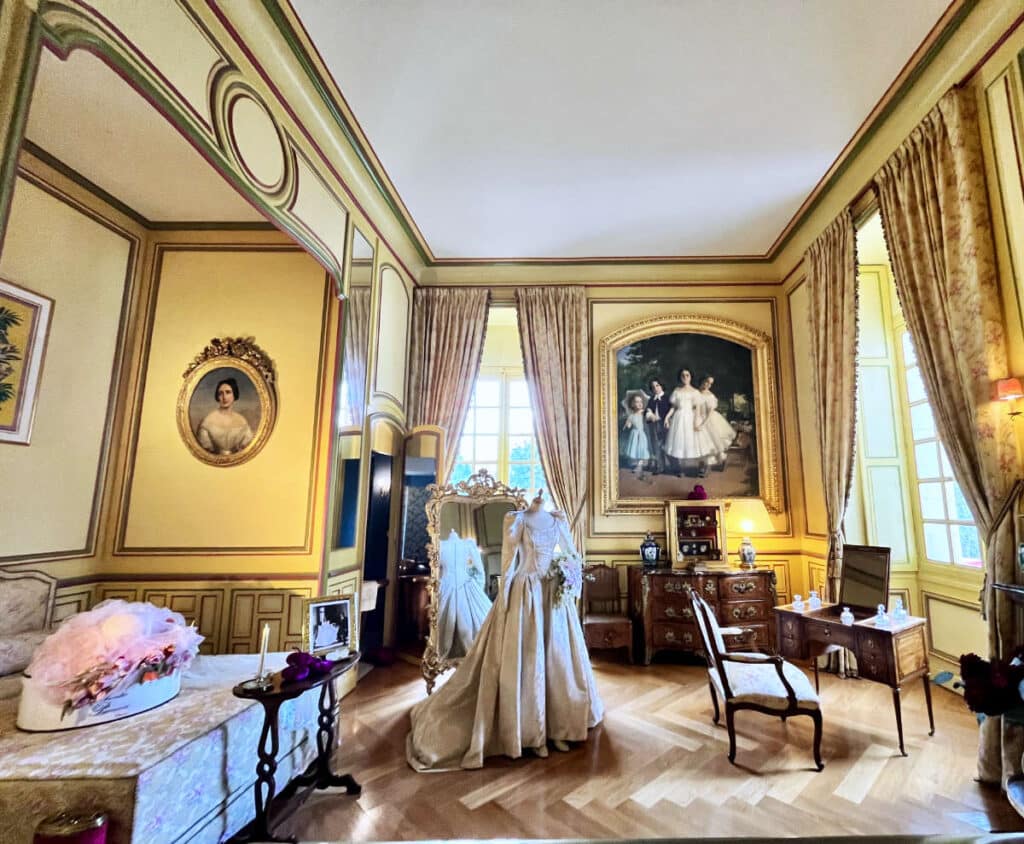
Each room inside the château is elaborately set up. Keep a look out for the large mechanical dog who moves indolently in the study.
The Gardens
The Château de Chéverny is surrounded by a large property that is dotted with different areas and gardens.
There is a “jardin d’amour” meaning “love garden”, a labyrinth, the apprentice gardens, tulip gardens, beehives, vineyards, hunting dog kennels, and a whole lot more. Indeed, you will likely spend more time in the gardens than in the château itself as there is quite a bit to explore.
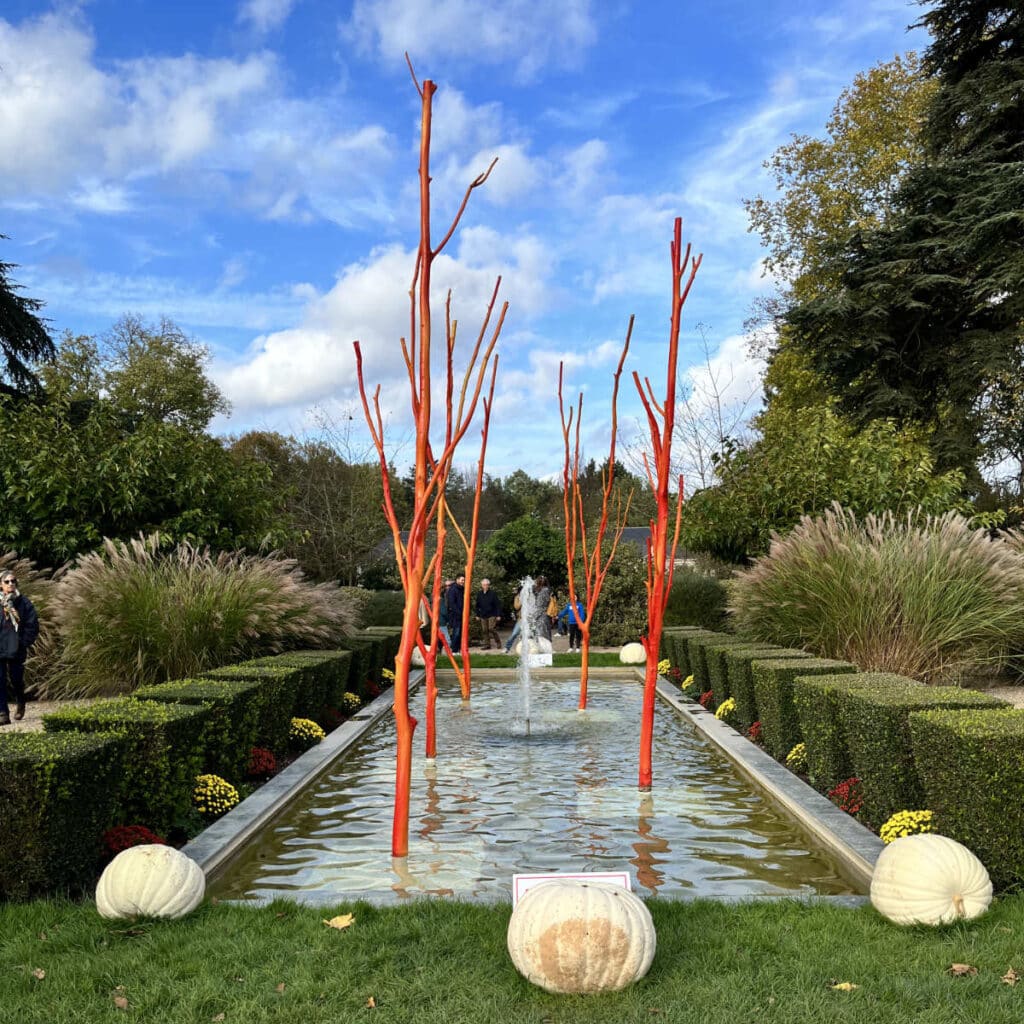
There is a special exhibition for the comic book character Tintin who featured the Château de Chéverny in its comic books and stories. The Belgian comic book creator Hergé used Cheverny as a model for his fictional “Château de Moulinsart” (Marlinspike Hall in English) in the Adventures of Tintin books.
In the books, the central tower and two wings are almost identical, but the outermost wings are not present. To accompany the Tintin exhibition, there are also a couple of gift shops, one for Tintin paraphernalia while the other is for château-related items.
There is also a large café in the Orangerie in the gardens which serves lunch and tea snacks. It can hold events like weddings for special occasions. Depending on the season you visit, there are also events held all over the château for holidays like Halloween, Christmas, and Easter.
The Hounds
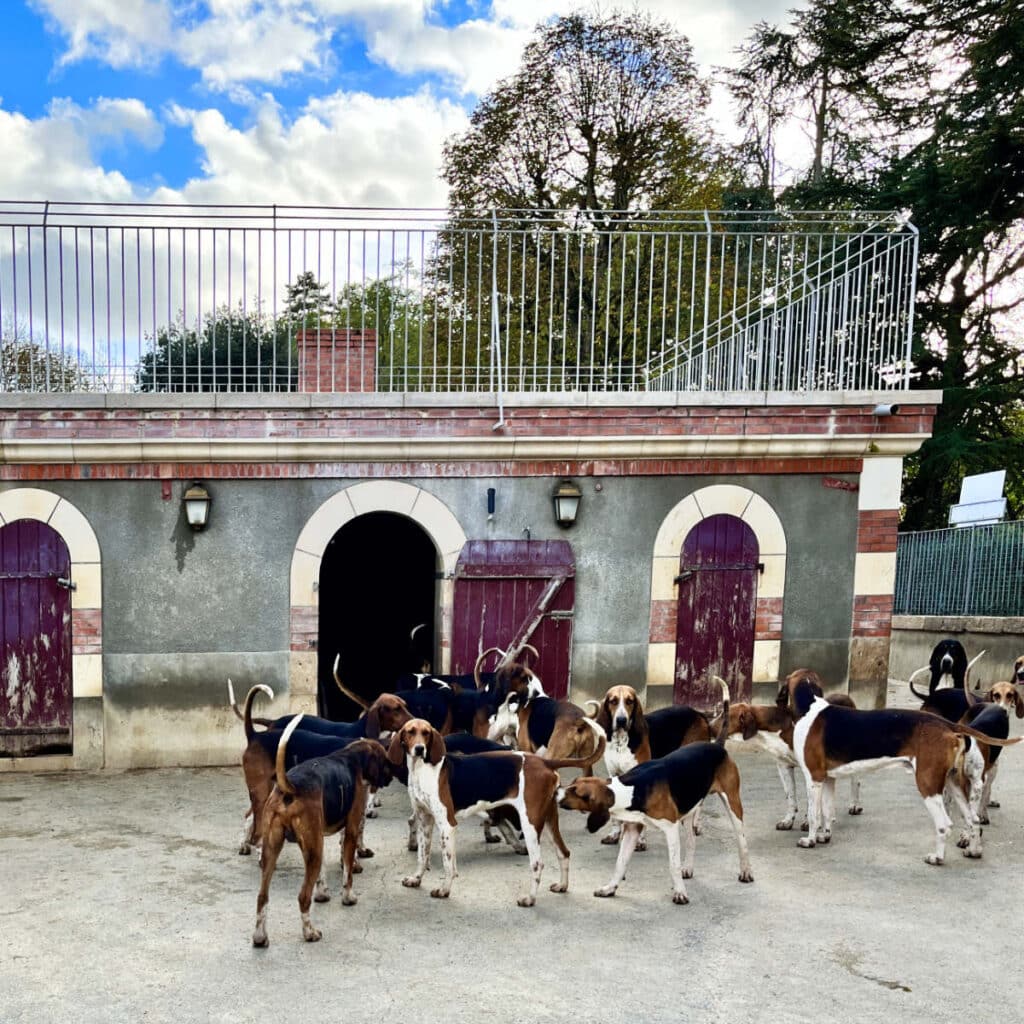
The Château de Cheverny also was a hunting château and is famous for its hounds, which are a mix of half-English foxhound and half-French Poitou. There are about 50-70 hounds still housed on the premises. You can watch them be fed at around 5pm daily and exercised across the large grounds.
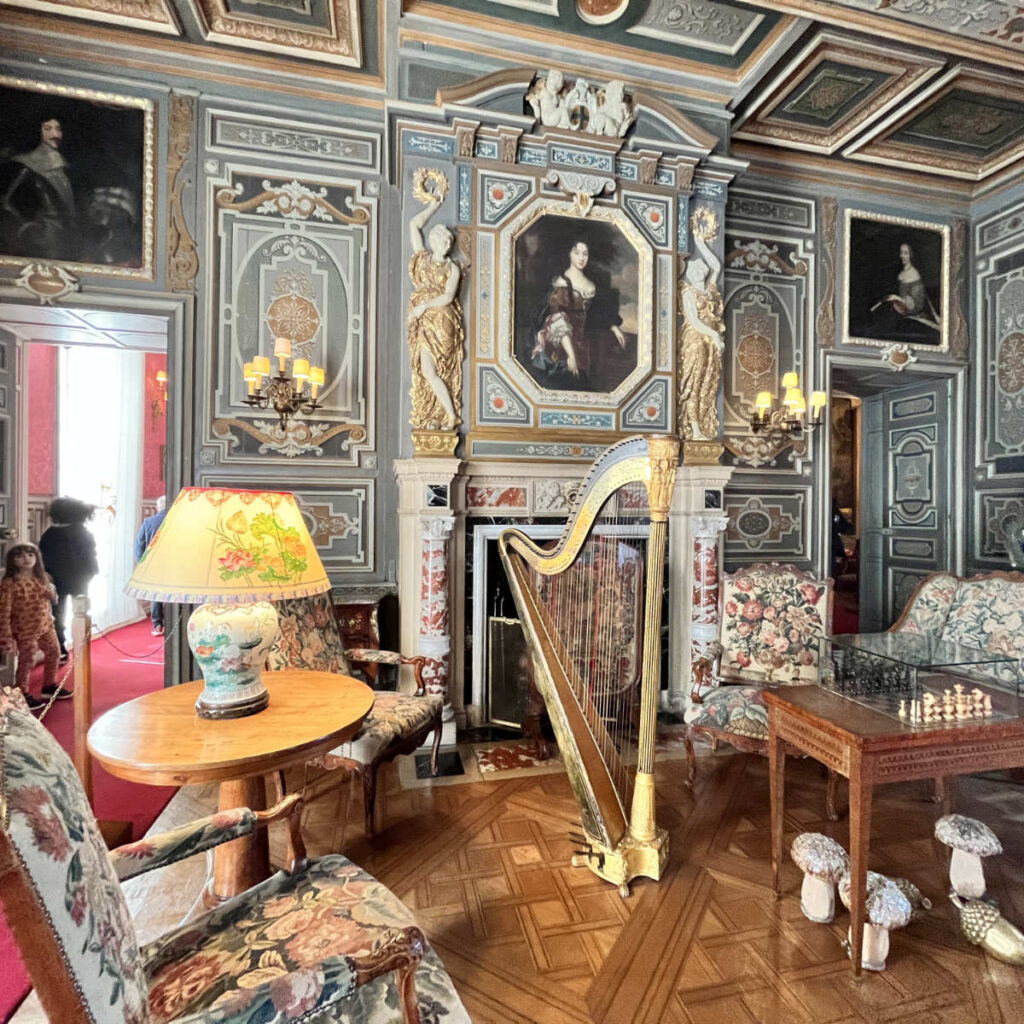
How to get there?
There are also various tour options leaving from Paris, which will have you there and back in style. The Loire is one of the big French wine regions, so certain tours combine wine-tasting and sightseeing. You can see the tour options to Château de Chéverny here.
Where to stay?
The Château de Chéverny is located about 20 minutes from the city of Blois, where there are several wonderful hotels. You can also choose to stay in Amboise which is a little further away. Some recommended hotels are:
In Blois:
- €€€ – ibis Blois Centre Château
- €€€€ – Hotel Mercure Blois Centre (with pool)
- €€€€€ – Fleur de Loire (on the quai across from the old city center of Blois)
In Amboise:

If you enjoyed that article, you may like to read more about traveling around the Loire Valley. A bientôt!
